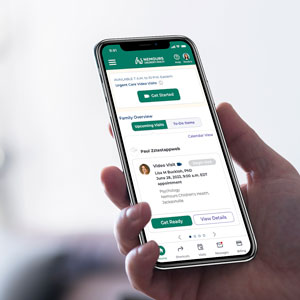Multiple Epiphyseal Dysplasia
Multiple epiphyseal dysplasia (MED) is a disorder of bone and cartilage development that results in small irregular epiphyses (ends of long bones that are next to the joints). It usually isn’t diagnosed until a child is at least two years old and starts to feel pain in the joints like arthritis. Nemours Children's is world-renowned for diagnosing and treating skeletal dysplasias, including MED. Our world-renowned experts have the experience to diagnose and identify symptoms caused by multiple epiphyseal dysplasia. We’re here to answer your questions and build a personalized care plan to relieve symptoms and help your child live life to the fullest.
Multiple epiphyseal dysplasia (MED) is a disorder of bone and cartilage development that results in small irregular epiphyses (ends of long bones that are next to the joints). It usually isn’t diagnosed until a child is at least two years old and starts to feel pain in the joints like arthritis. Nemours Children's is world-renowned for diagnosing and treating skeletal dysplasias, including MED. Our world-renowned experts have the experience to diagnose and identify symptoms caused by multiple epiphyseal dysplasia. We’re here to answer your questions and build a personalized care plan to relieve symptoms and help your child live life to the fullest.
Why Choose Us
Nemours has been recognized for delivering advanced pediatric orthopedic care since 1940. Families from all over the world travel to see our skeletal dysplasia experts. Our genetics doctors have the experience and training to diagnose even the rarest types of skeletal dysplasia, like multiple epiphyseal dysplasia (MED). Once we’ve identified your child’s condition, our care teams work together to create a personalized treatment plan that meets your family’s needs.
Treatment is led by our world-renowned pediatric orthopedic experts, including Dr. William Mackenzie. Since skeletal dysplasia can evolve and change with time, Nemours has established one of the world’s top pediatric imaging programs to track and measure changes to children’s bodies.
Our care navigators coordinate appointments since most kids need to see different specialists, and some may need multiple surgeries. We also help kids with MED achieve the highest possible function and quality of life through access to Nemours experts, clinical programs and support services, including:
- Clinical trials research opportunities
- Support services and community resources

